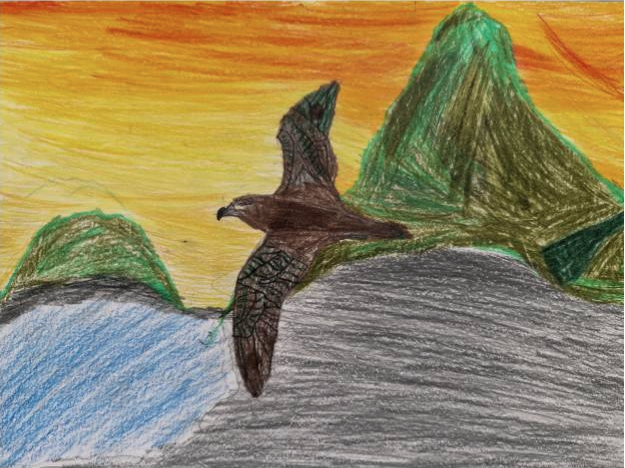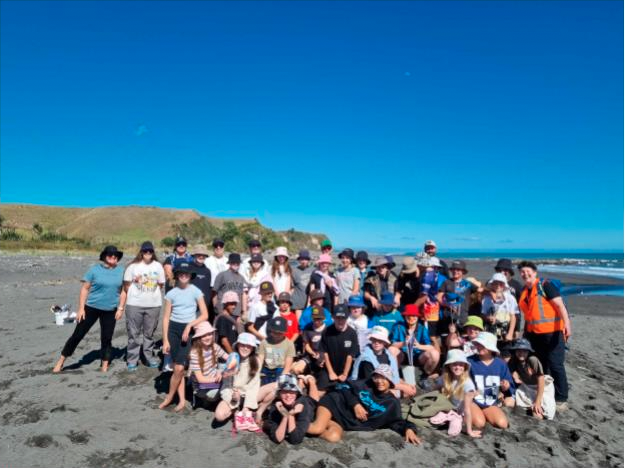From Maunga to Moana: Tauira Protecting Taranaki’s Manu Moana
Ngā manu pīkoko from ngā kura ō Omata and Fitzroy are learning about their local manu takutai moana (sea and shore birds). In a collaboration between Te Ara Taiao and Te Whānau Toroa - an initiative led by Wild for Taranaki, tauira have a unique opportunity to deepen their connection to some of Taranaki’s manu taonga, coastal ecosystems, and gain an understanding of the crucial roles that these manu contribute to our taiao.
Picture: Ōi artwork by Omata School ngā manu pīkoko student.
Why are manu takutai moana important for the hauora of ecosystems?
Manu takutai moana are a vital part of Aotearoa’s coastal ecosystem. They play a crucial role in nutrient cycling and maintaining the hauora of both the takutai (coast) and whenua (land). These manu are the connectors between our marine and whenua-based ecosytems. Manu feed on kai moana such as fish, squid and crustaceans, then deposit faeces on the whenua, fertilising and enriching the soil.
What have ngā manu pīkoko been doing?
An aim of Te Whānau Toroa is to support communities to provide ‘safe-haven’ areas of coastline, where manu have the opportunity to breed, grow, thrive, and then spread into other areas. Through their involvement with the initiative, ngā manu pīkoko have been learning how to identify manu takutai moana, identify and map potential nesting sites, feeding sites, and threats (humans and dogs!), then use this knowledge to advocate for their protection through creating signage and video content to share with the community. This hands-on learning is invaluable for tamariki to grasp just how fragile these ecosystems are, and how activities impact ngā manu. The awareness of our collective responsibility is a great motivator to inspire thoughts and actions to advocate and protect these vulnerable manu, like this awesome video made by Omata school ngā manu pīkoko:
What can people do to help?
Keep your kuri (dog) on a leash and keep a close eye on them when at the beach, especially around coastal vegetation, manu habitats and nesting sites. Dogs are one of the main threats to our manu takutai moana through both predation and disturbance, leading to nest abandonment and loss of eggs and chicks.
Trapping predators such as rats, mice, stoats and ferrets is crucial for protecting manu takutai moana. Reducing predators helps to ensure the survival of eggs, chicks and adult manu nesting in coastal areas.
Participate in community initiatives. Join or set up a safe haven project through Wild for Taranaki, attend a workshop to learn more about manu takutai moana, and join in on community beach clean ups such as those organised by the Taranaki Conservationists group.
Photo: Omata school at Tapuae Marine Reserve with Dr. Emily Roberts for Te Whānau Tōroa.
Author: Hineana Todd, Edited by Dr. Emily Roberts
Find out more about Te Whānau Tōroa and how you can get involved here: wildfortaranaki.nz/te-whanau-toroa
Manu takutai moana ID resources:
A3 Brochure about Shorebirds (Wild for Taranaki - Sept 2023).
A3 Brochure about Seabirds (Wild for Taranaki - Sept 2023).


